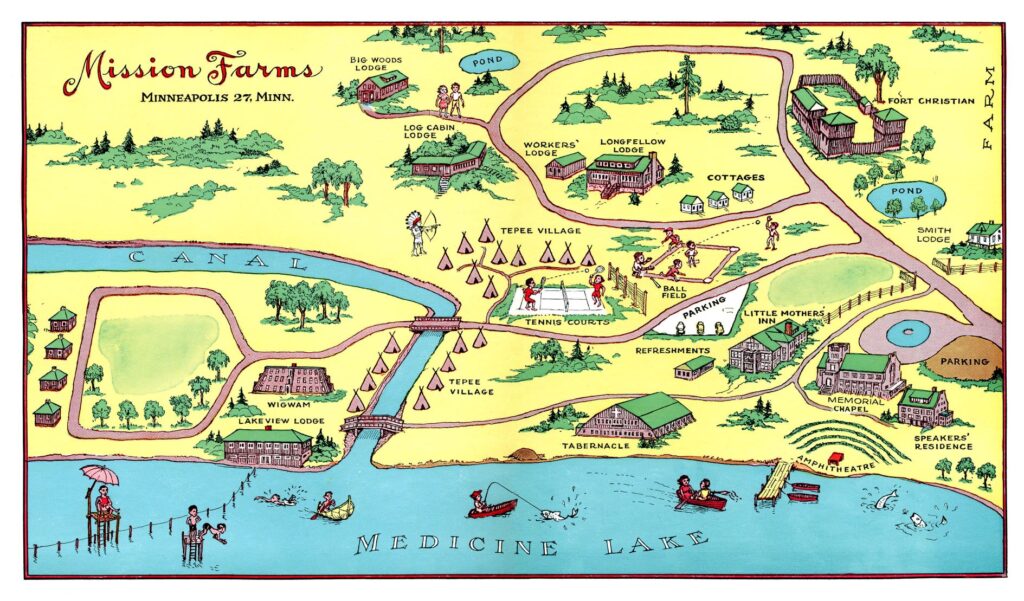Mission Farms on Medicine Lake, pt. 1
By Stacy Paulsen
Nestled between French Regional Park, Armstrong High School and residential homes at the north end of Medicine Lake lies a complex of buildings and expansive lawns that are home to Missions Inc., a nonprofit organization providing chemical health, domestic violence, and long term care services. It would be easy to pass by the entrance to the facility on E Medicine Lake Blvd. without realizing that this site has deep history and local significance far beyond the services Missions Inc. provides to individuals today.

The history of the site actually extends back to 1895 when a consortium of 13 Minneapolis churches and business leaders banded together to create Union City Mission, an organization devoted to aiding homeless and unemployed men in Minneapolis. Thousands of men working seasonal jobs in northern Minnesota’s fields, forests, and mines had begun to migrate to Minneapolis, congregating in the “Gateway District” around Hennepin, Washington, and Nicollet Avenues, and bringing problems with crime and alcohol abuse.
For several decades, Union City Mission provided services to this population until the Methodist minister Reverend William E. Paul sought to expand the scope of the organization in 1927 with the rental and eventual purchase of a working farm on the north shore of Medicine Lake in Plymouth — Mission Farms. As a recovered alcoholic himself, Reverend Paul felt drawn to minister to these men who, he felt, would benefit both mentally and physically from the productive work of building and running a farm.
With lumber milled on the grounds and raw materials salvaged from the burned remains of the old National Hotel in Minneapolis, Rev. Paul and truckloads of needy men constructed the Tabernacle, a cavernous gathering space with a 1,200 seat capacity, and numerous other structures on the grounds. In the spirit of self-sufficiency, the men built a blacksmith’s shop, a machine shop, and a mattress factory on the site to repair plows and machinery, and build wagons, furniture, and mattresses. The men raised cattle and pigs, and used old, donated “gift horses” to till the soil.
Eventually expanding to a total of 415 acres, 4 farms, multiple structures, and 370 beds, Mission Farms served as a training and rehabilitation facility for 775 men at the height of the Great Depression with hundreds of men acquiring skills that allowed them to move off of government relief and become self-sufficient. The Mission Farms were so successful that they provided a model for the federal government’s Civilian Conservation Corp, with several of its principles incorporated into the CCC transient camps.